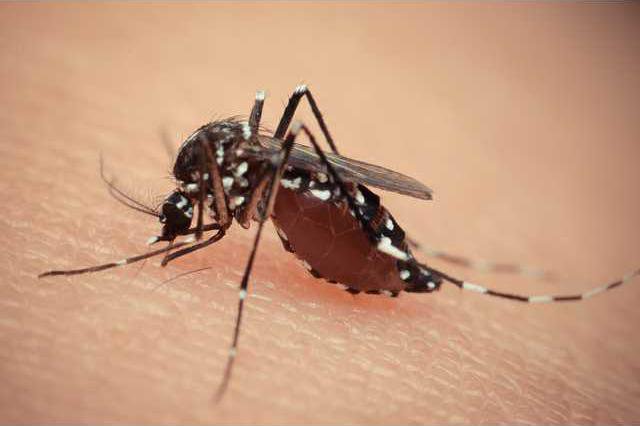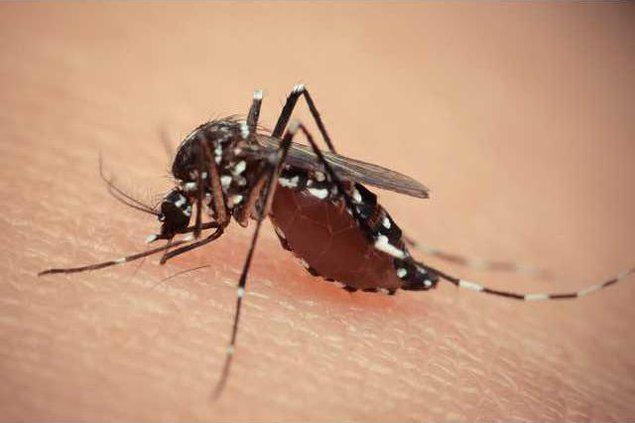It seems counterintuitive, but some health officials believe Florida needs more mosquitoes to help slow the spread of Zika, the virus the World Health Organization deemed a global health emergency.
The Food and Drug Administration has signed off on a proposal to release genetically modified male mosquitoes on an island off the Florida coast.
The idea is that the mosquitoes will mate with the Aedes aegypti females that carry Zika, and their deformed offspring will not mature and therefore won't be able to reproduce.
A single Aedes aegypti female can lay up to 300 eggs in her lifespan, but she only lives about a month. So while there will be more mosquitoes temporarily on the island, their numbers will soon sharply decline.
Oxitec, the division of the company that created the "self-limiting mosquito" by injecting eggs with altered DNA, tested the plan in Brazil and reduced the mosquito population there by 82 percent within eight months, according to The Atlantic.
The trial site proposed for Florida is Key Haven, an island in the Florida Keys. It's connected to the mainland by highway U.S. 1 and is about 160 miles from Miami, where health officials believe local mosquitoes are responsible for at least 17 cases of Zika.
At a public hearing in April, Key Haven residents spoke out against the trial, noting that they had no cases of Zika or other mosquito-borne diseases, and that they were concerned about the long-term effects of a genetically modified mosquito population on their children.
The residents will have their say again at a referendum scheduled Nov. 8. After that, the Florida Keys Mosquito Control District will decide whether the trial can proceed, Scientific American reported.
Meanwhile, as Texas officials on Tuesday announced the first death of a U.S.-born baby stricken with Zika, a California community is already trying to eliminate Aedes aegypti by adding more mosquitoes.
Wired magazine reported that nearly 400,000 male mosquitoes will be released in Clovis, California, in Fresno County, by summer's end.
The mosquitoes, developed by a Kentucky biotech startup called MosquitoMate, carry a microbe called Wolbachia that interferes with reproduction; the female can lay eggs, but they won't hatch.
Sterile insects, I think theyre the way of the future, Steve Mulligan, manager of the Consolidated Mosquito Abatement District, told Wired's Sarah Zhang.
Unlike the residents of Key Haven, many Clovis residents are OK with a temporary infestation if it delivers results. Only female mosquitoes bite humans, so they only have to put up with whining from the males, who like to hang out with humans, who are the females' preferred meal.
If these new generations of mosquitoes prove effective, they stand to dramatically improve public health, health officials say. Aedes aegypti is native to Africa, but the mosquito travels well.
"Some have been known to live for days in the damp clothes enclosed in a trunk," wrote Molly Caldwell Crosby in her book on yellow fever, "The American Plague."
The striped-legged mosquito, in addition to Zika, can transmit dengue, chikungunya and yellow fevers. While there is an effective vaccine for yellow fever, the disease still kills about 30,000 people a year, and the WHO is currently battling an outbreak in Angola.
Dengue also continues to be a threat in tropical and subtropical nations, especially among children, the WHO says.
The Food and Drug Administration has signed off on a proposal to release genetically modified male mosquitoes on an island off the Florida coast.
The idea is that the mosquitoes will mate with the Aedes aegypti females that carry Zika, and their deformed offspring will not mature and therefore won't be able to reproduce.
A single Aedes aegypti female can lay up to 300 eggs in her lifespan, but she only lives about a month. So while there will be more mosquitoes temporarily on the island, their numbers will soon sharply decline.
Oxitec, the division of the company that created the "self-limiting mosquito" by injecting eggs with altered DNA, tested the plan in Brazil and reduced the mosquito population there by 82 percent within eight months, according to The Atlantic.
The trial site proposed for Florida is Key Haven, an island in the Florida Keys. It's connected to the mainland by highway U.S. 1 and is about 160 miles from Miami, where health officials believe local mosquitoes are responsible for at least 17 cases of Zika.
At a public hearing in April, Key Haven residents spoke out against the trial, noting that they had no cases of Zika or other mosquito-borne diseases, and that they were concerned about the long-term effects of a genetically modified mosquito population on their children.
The residents will have their say again at a referendum scheduled Nov. 8. After that, the Florida Keys Mosquito Control District will decide whether the trial can proceed, Scientific American reported.
Meanwhile, as Texas officials on Tuesday announced the first death of a U.S.-born baby stricken with Zika, a California community is already trying to eliminate Aedes aegypti by adding more mosquitoes.
Wired magazine reported that nearly 400,000 male mosquitoes will be released in Clovis, California, in Fresno County, by summer's end.
The mosquitoes, developed by a Kentucky biotech startup called MosquitoMate, carry a microbe called Wolbachia that interferes with reproduction; the female can lay eggs, but they won't hatch.
Sterile insects, I think theyre the way of the future, Steve Mulligan, manager of the Consolidated Mosquito Abatement District, told Wired's Sarah Zhang.
Unlike the residents of Key Haven, many Clovis residents are OK with a temporary infestation if it delivers results. Only female mosquitoes bite humans, so they only have to put up with whining from the males, who like to hang out with humans, who are the females' preferred meal.
If these new generations of mosquitoes prove effective, they stand to dramatically improve public health, health officials say. Aedes aegypti is native to Africa, but the mosquito travels well.
"Some have been known to live for days in the damp clothes enclosed in a trunk," wrote Molly Caldwell Crosby in her book on yellow fever, "The American Plague."
The striped-legged mosquito, in addition to Zika, can transmit dengue, chikungunya and yellow fevers. While there is an effective vaccine for yellow fever, the disease still kills about 30,000 people a year, and the WHO is currently battling an outbreak in Angola.
Dengue also continues to be a threat in tropical and subtropical nations, especially among children, the WHO says.








